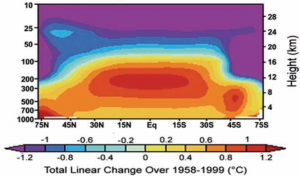The Australian gives us this precious piece, reprinted from The Times:
Man-made climate change evidence stronger: study
EVIDENCE that human activity is causing global warming is much stronger than previously stated and is found in all parts of the world, according to a study that attempts to refute claims from sceptics.
I'll get to the bit that shows this "study" for what it really is in just a mo', but in passing, I note that real scientific work doesn't have an agenda, it attempts to find the truth. Yes, scientists do set up "devil's advocate" experiments in which they attempt to disprove theories, but the purpose is to test the strength of the theory: if it passes, it gains credibility. Or, of course, if it fails, it is disconfirmed. But one shouldn't set up 'studies' whose goal and methodology is designed to confirm what you already claim; science is tested by passing hard tests, not by being confirmed in 'studies' designed to be helpful. Moving on...
The "fingerprints" of human influence on the climate can be detected not just in rising temperatures but in the saltiness of the oceans, rising humidity, changes in rainfall and the shrinking of Arctic Sea ice at the rate of 600,000sq km a decade.
Now let's just stop and think for a moment about this, and let's overlook the detail that Arctic sea ice has risen every year since 2007, because I just can't get my eyes off that "saltiness of the oceans" bit. For all intents and purposes the amount of water on Earth is constant. Yes, meteorites may deliver some, and some may be broken up by radiation in the atmosphere, some hydrogen atoms escape the Earth's gravity, and so on. But compared with the total quantity of water, these changes are, on the scale of hundreds or even thousands of years, minuscule. So much for two countries' erstwhile best newspapers.


 Model predicts air above the tropics heats up. from the
Model predicts air above the tropics heats up. from the 
Recent comments
9 years 1 day ago
9 years 11 weeks ago
9 years 11 weeks ago
9 years 11 weeks ago
9 years 11 weeks ago
9 years 13 weeks ago
9 years 13 weeks ago
9 years 13 weeks ago
9 years 13 weeks ago
9 years 13 weeks ago